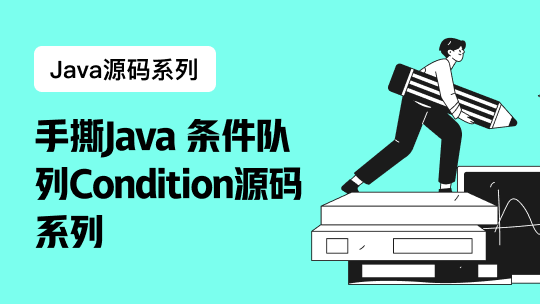小Hub领读:
不知道你们有没给cache设置过过期时间,来试试?
上一篇文章中,我们使用springboot集成了redis,并使用RedisTemplate来操作缓存数据,可以灵活使用。
今天我们要讲的是Spring为我们提供的缓存注解Spring Cache。Spring支持多种缓存技术:RedisCacheManager、EhCacheCacheManager、GuavaCacheManager等,使用之前需要配置一个CacheManager的Bean。
配置好之后使用常用的三个注解来缓存数据:
- @Cacheable
- @CachePut
- @CacheEvict。
这三个注解方别代表着什么意思,等会我们一一来解剖。
1、配置RedisCacheManager
刚才说了,首先我们需要配置一个缓存管理器,然后才能使用缓存注解来管理缓存。上一篇文章中我们已经整合了redis,接下来,我们只需要直接去配置RedisCacheManager即可。
com.markerhub.config.RedisConfig
/**
- 配置一个CacheManager才能使用@Cacheable等注解
- 公众号:MarkerHub
*/ @Bean public CacheManager cacheManager(RedisTemplate<string, object> template) {
// 基本配置 RedisCacheConfiguration defaultCacheConfiguration = RedisCacheConfiguration .defaultCacheConfig() // 设置key为String .serializeKeysWith(RedisSerializationContext.SerializationPair.fromSerializer(template.getStringSerializer())) // 设置value 为自动转Json的Object .serializeValuesWith(RedisSerializationContext.SerializationPair.fromSerializer(template.getValueSerializer())) // 不缓存null .disableCachingNullValues() // 缓存数据保存1小时 .entryTtl(Duration.ofHours(1)); // 够着一个redis缓存管理器 RedisCacheManager redisCacheManager = RedisCacheManager.RedisCacheManagerBuilder // Redis 连接工厂 .fromConnectionFactory(template.getConnectionFactory()) // 缓存配置 .cacheDefaults(defaultCacheConfiguration) // 配置同步修改或删除 put/evict .transactionAware() .build(); return redisCacheManager;}
上面的配置中,大部分代码都给出了注释,我们只需要根据需求配置一下即可。其中反序列策略延用了原来RedisTemplate的参数。
- RedisCacheConfiguration
- RedisCacheManager
还有一个重要的步骤不能忘记了,需要开启Spring Cache的缓存功能支持,很简单,只需要在RedisConfig上添加一个注解:
@EnableCaching
写一个例子
上面我们已经已经配置了RedisCacheManager帮我们管理缓存,接下来我们就去使用Spring Cache的注解来完成我们的代码测试。
下面的例子我写得可能有点粗,如果你对一些参数还不了解,建议你看看这篇文章: https://blog.csdn.net/dreamhai/article/details/80642010。
1、@Cacheable
标记在方法或者类上,标识该方法或类支持缓存。Spring调用注解标识方法后会将返回值缓存到redis,以保证下次同条件调用该方法时直接从缓存中获取返回值。这样就不需要再重新执行该方法的业务处理过程,提高效率。
@Cacheable常用的三个参数如下:
cacheNames 缓存名称
key 缓存的key,需要注意key的写法哈
condition 缓存执行的条件,返回true时候执行
@Slf4j @Service public class UserServiceImpl implements UserService {
@Override @Cacheable(cacheNames = "cache_user", key="'user_' + #id") public User getById(long id) { log.info("进来查库了--------->{}", id); User user = new User(); user.setId(1L); user.setUsername("MarkerHub" + id); return user; }}
然后写一个具体的调用:
@RestController
public class UserController {
@Autowired
UserService userService;
@GetMapping("/u/{id}")
public User index(@PathVariable("id") Long id) {
User user = userService.getById(id);
return user;
}
}
测试下访问结果,访问链接:http://localhost:8080/u/12,
第一次调用时候控制台输出:
进来查库了--------->12
第二次再访问的时候,就没有再输出,说明没有进入业务方法,就是在redis中获取结果直接返回。
看一下redis的可视化工具:
这里大家需要注意一下,在配置redis的序列化方式的时候,一定要配置下面的代码,这个在之前Springboot配置redis中已经说过了。
Jackson2JsonRedisSerializer<object> serializer = new Jackson2JsonRedisSerializer<object>(Object.class);
ObjectMapper objectMapper = new ObjectMapper();
objectMapper.setVisibility(PropertyAccessor.ALL, JsonAutoDetect.Visibility.ANY);
objectMapper.enableDefaultTyping(ObjectMapper.DefaultTyping.NON_FINAL);
serializer.setObjectMapper(objectMapper);
如果你序列化之后的value只是一个简单的json数据,这样会引起强转错误的。需要注意一下!
2、@CacheEvict
标记在方法上,方法执行完毕之后根据条件或key删除对应的缓存。常用的属性:
allEntries boolean类型,表示是否需要清除缓存中的所有元素
key 需要删除的缓存的key
@Override @CacheEvict(cacheNames = "cache_user", allEntries = true) public void update(User user) {
// 更新逻辑...}
于是,update方法执行之后,cacheNames="cache_user"里面的所有缓存都会被删除!这也是很常用的方法。当然了,你还可以这样写,根据key来删除某个指定缓存:
@Override
@CacheEvict(cacheNames = "cache_user", key = "'user_' + #user.id")
public void update(User user) {
// 更新逻辑...
}
3、@@CachePut
标注的方法在执行前不会去检查缓存中是否存在之前执行过的结果,而是每次都会执行该方法,并将执行结果以键值对的形式存入指定的缓存中。
4、@Caching
可以在一个注解上标注多种注解,其拥有三个属性:cacheable、put和evict,分别用于指定@Cacheable、@CachePut和@CacheEvict
过期时间
我们已经实现了Spring Cache的基本功能,整合了Redis作为RedisCacheManger,但众所周知,我们在使用@Cacheable注解的时候是无法给缓存这是过期时间的。但有时候在一些场景中我们的确需要给缓存一个过期时间!
在缓存与库数据不一致的时候,自动过期就显得尤为重要,这是一个保底的方式。那么,如何给Spring cache一个过期时间呢?
其实不需要我们去整合第三方的包,比如Redission等,我们在配置RedisCacheManager的时候其实就可以配置过期时间,只是,这个过期时间是针对cache的。
这是什么意思?比如你使用了如下注解:
@Cacheable(cacheNames = "cache_user", key="'user_' + #id")
我们可以在初始化的时候指定cacheNames为cache_user的cache的过期时间。我们先来回顾一下RedisCacheManager的初始化配置。
上面在RedisCacheConfiguration上我们配置一个关于过期时间的配置.entryTtl(Duration.ofHours(1)),缓存数据保存一个小时。并且在RedisCacheManager上通过.cacheDefaults(defaultCacheConfiguration)进行了配置。这两行代码其实是在说,所有的缓存数据默认保存一个小时。
相比于以前,我们统一配置了缓存的过期时间是1个小时。但这还是写得比较固定,一般来说,我们想给不同的cache不同的过期时间,比如cache_post和cache_user不一样的过期时间,那么这个怎么弄呢?能否在配置中实现吗?
答案是可以的,很简单,在RedisCacheManager中有这个方法:
RedisCacheManagerBuilder withCacheConfiguration(String cacheName, RedisCacheConfiguration cacheConfiguration)
可以给每个cacheName不同的RedisCacheConfiguration,之前的配置,我们是配置了一个默认的缓存配置,有个这个方法之后,我们就可以指定某个cache的缓存配置。每个缓存配置的不同的地方其实就是过期时间。因此,我们抽个方法出来生成缓存配置,代码如下:
RedisCacheConfiguration getCacheConfigurationWithTtl(RedisTemplate<string, object> template, long seconds) {
return RedisCacheConfiguration
.defaultCacheConfig()
// 设置key为String
.serializeKeysWith(RedisSerializationContext.SerializationPair.fromSerializer(template.getStringSerializer()))
// 设置value 为自动转Json的Object
.serializeValuesWith(RedisSerializationContext.SerializationPair.fromSerializer(template.getValueSerializer()))
// 不缓存null
.disableCachingNullValues()
// 缓存数据保存1小时
.entryTtl(Duration.ofSeconds(seconds));
}
参数seconds指定缓存的过期时间,因此,我们在RedisCacheManager中应该这样配置:
RedisCacheManager redisCacheManager =
RedisCacheManager.RedisCacheManagerBuilder
// Redis 连接工厂
.fromConnectionFactory(template.getConnectionFactory())
.cacheDefaults(getCacheConfigurationWithTtl(template, 60 * 60))
.withCacheConfiguration("cache_user", getCacheConfigurationWithTtl(template, 60))
.withCacheConfiguration("cache_post", getCacheConfigurationWithTtl(template, 120))
// 配置同步修改或删除 put/evict
.transactionAware()
.build();
return redisCacheManager;
}
根据上面的配置,我们指定了cacheName如下:
- cache_user过期时间为60秒
- cache_post过期时间为120秒
- 其他默认过期时间为1小时
这也是我建议大家的写法!
很多人还有其他实现写法,比如在cacheNames后面添加#3600,截取#后面的数字作为过期时间。
@Cacheable(cacheNames = "cache_user#3600", key="'user_' + #id")
更有一些人想给key一个过期时间,于是又有这种写法:
@Cacheable(cacheNames = "cache_user#3600", key="'user_' + #id + '#3600'")
其实在我看来没有必要。直接在配置中写好,简单方便!
结束语
好啦,今天的文章到此结束啦,右下角点个在看再走呗,哈哈。
推荐阅读:
分享一套SpringBoot开发博客系统源码,以及完整开发文档!速度保存!
Github上最值得学习的100个Java开源项目,涵盖各种技术栈!
2020年最新的常问企业面试题大全以及答案</string,></string,>












